How to Open HEIC Files on Windows?
HEIC is a file format meant to store a collection of Images. This can be one or more images. This file store images in High-Efficiency image format and also contains metadata that describes each image. The extension of HEIC file is “.heic” but you will also see .HEIF, which is also the same. This storage format is very popular because it compresses the images while saving. It was MPEG who introduced the support of this format for the first time.
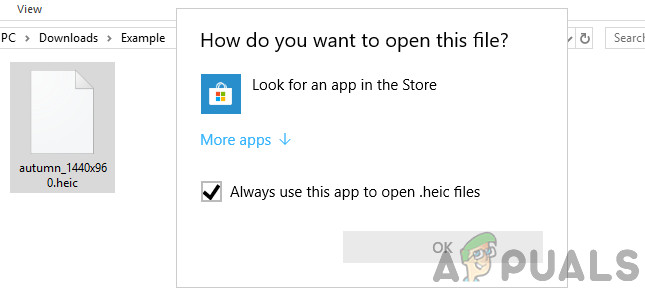
If you transfer data from your iPhone or iPad to a PC or laptop, you will see many files in HEIC format, especially image files. The extension of these files will be as mentioned before.
Benefits of using HEIC files
HEICfiles can be encrypted and decrypted instantly with very low usage of processor. This format compresses the size of the image, so it takes less space on the server or local storage and loads faster. JPEG file format does not support any file format except still images, while Heic format can save single or multiple images as a GIF file does. Image editing can also be done like crop, rotation, etc very easily.
Some more benefits of HEIC files are below:
- It is of about half the size of a JPEG file where both will have the same quality.
- Can store multiple photos in one file (ideal for Live Photos and bursts)
- Supports transparency
- Can store image edits
- Support 16-bit color vs JPG’s 8-bit
- Support 4k and 3D
- Save Image with its thumbnail and other properties.
How to Open HEIC Files on Windows?
Windows do not support HEIC file extension, but there is another way to view HEIC files on a Windows device. Here you need third party applications software for this purpose.
There are tons of free software out there which can open this file extension but we will be using a standalone software to do the job.
Note: Appuals is in no way affiliated with any third-party applications. Please proceed at your own risk.
- Open any browser and go to the official CopyTrans

CopyTrans HEIC - Click on Download Button to download the tool to an accessible location.
- After the tool is downloaded, right-click on it and select Run as administrator. The installation will begin.

Installing HEIC File - Right Click on any HEIC file, Select Properties and then change Opens with to Copy Trans software. This will set the preferences of that application to run with CopyTrans.

Changing the Preference of HEIC Files
- Restart your computer. Now, restart your computer and check if the files are being properly recognized.
If you are unable to set the preference for all the HEIC files, you can follow the steps below to set the preferences manually using your Settings.
- Press Windows + S to launch the Search bar and type Default apps. Open the result which comes forth.

Default Apps – Windows - Now, choose the .heic file format and change the default application to the application.

Changing HEIC File Format Preference - Now, restart your computer and check if you can easily access the HEIC files.
How to Convert HEIC files to JPEG?
There are also tools available out there which help you in converting the HEIC files to JPEG format. The process is very quick as well. In this method, we will navigate to a third-party website and use their services.
Note: Appuals is at no way associated with any third-party websites. They are listed for the reader’s knowledge.
- Navigate to the website of heictojpg on your browser.

HEICtoJPEG - Now, upload your image.
- After a little processing, you will be able to download your image safely to an accessible location with the JPEG format.
Update Windows to the Latest Build
The HEIC image format is a new picture format used by Apple in its devices. Microsoft has included native support for HEIC format for some versions of Windows and released it through the Windows update channel. In this context, updating the Windows of your system to the latest build may solve the problem.
- Manually update Windows of your system to the latest build. Make sure no additional/optional update is pending. If you are updating from an obsolete version, you may have to create an installation media and update the system through that media (technically called: in-place upgrade).
- After updating Windows, check if you can open HEID files like normal picture files on your PC.
Download and Install the HEIC Extensions from Microsoft Store
You may fail to open the HEIC files if your system is missing the codecs required to open the files. In this context, installing the HEIC codecs (by using the HEIC extensions from Microsoft Store) may solve the problem.
- Hit the Windows key and select Settings. Then select Apps and in the left tab of the window, select Default Apps.
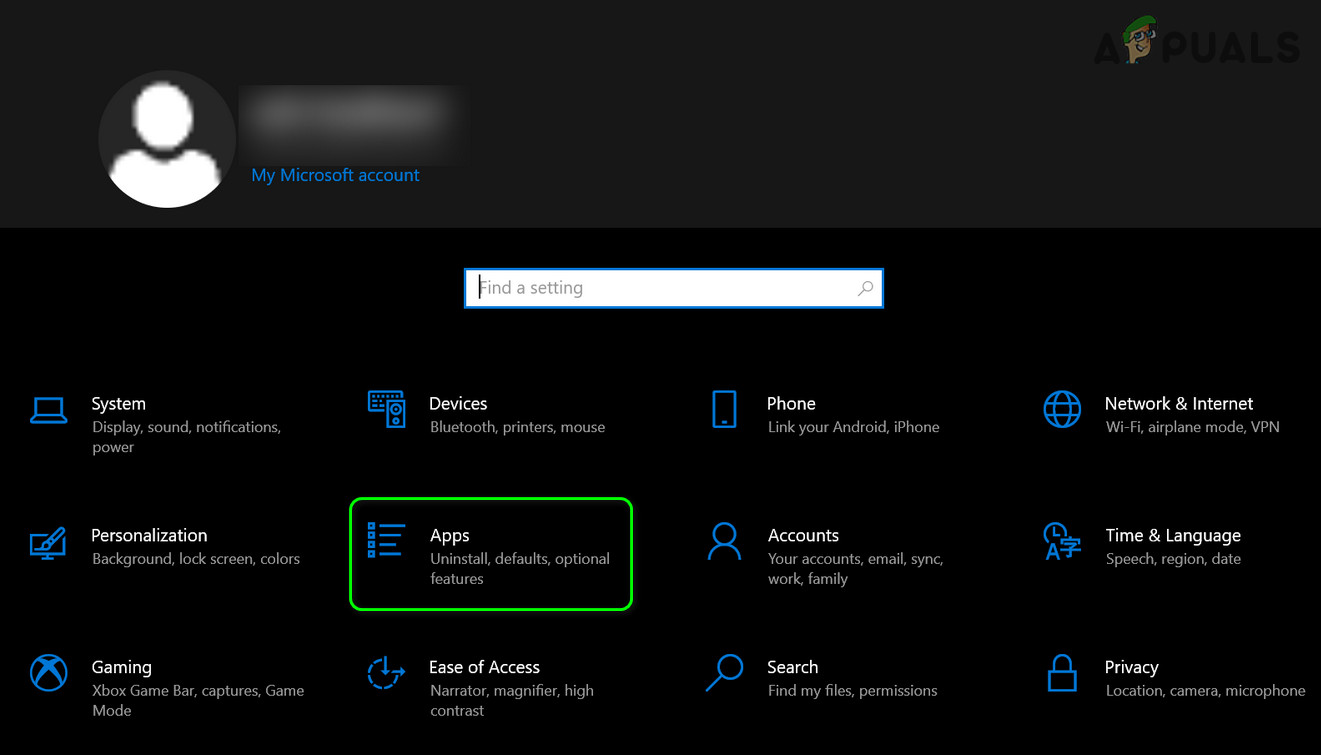
Open Apps in the Windows Settings - Now, in the right half of the window, set Photos as the Default Photos Viewer and click on Choose Default Apps by File Type (you may have to scroll a bit to find the option).
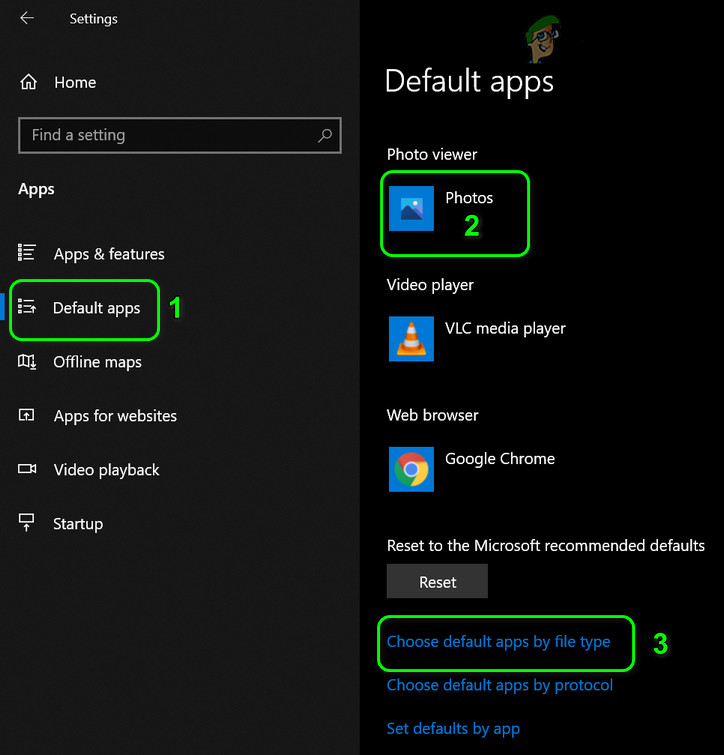
Set Default Photos Viewer to Photos and Open the Setting of Choose Default Apps by File Type - Then set Photos (make sure you have Photos installed and enabled) as the default application for HEIC and HEIF file types. If you cannot assign Photos to HEIF file type, then skip it.
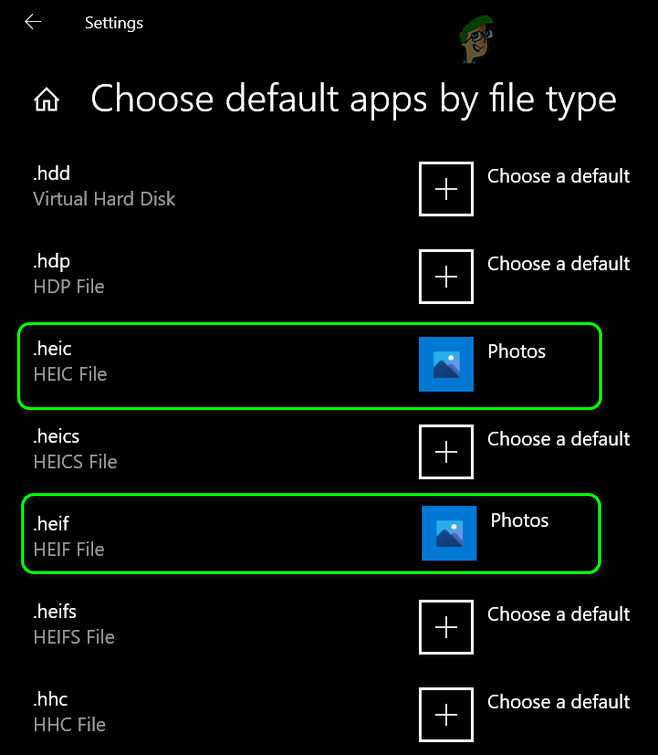
Set Photos to be the Default Application for HEIC and HEIF File Types - Now launch a web browser and navigate to the HEIC image extension page. Then click on the Get button and when prompted, click on Open Microsoft Store.
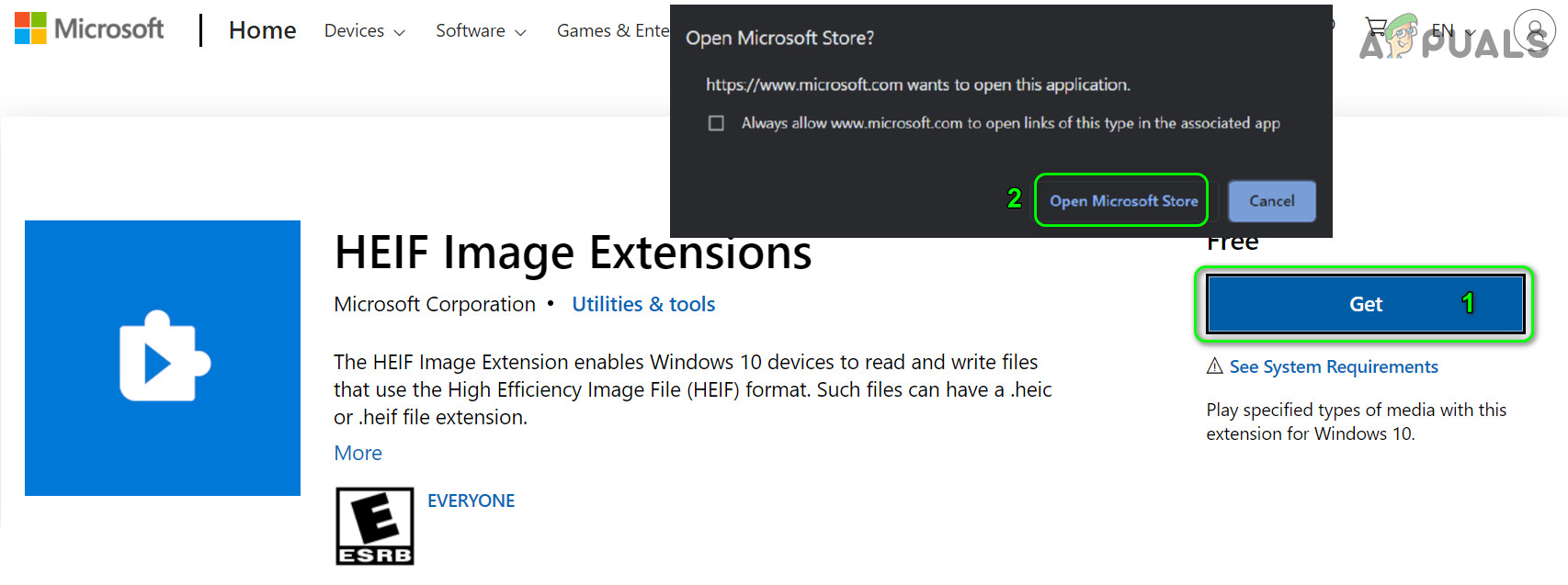
Open HEIF Image Extensions in the Microsoft Store - Now click on the Get button and then install the extension.
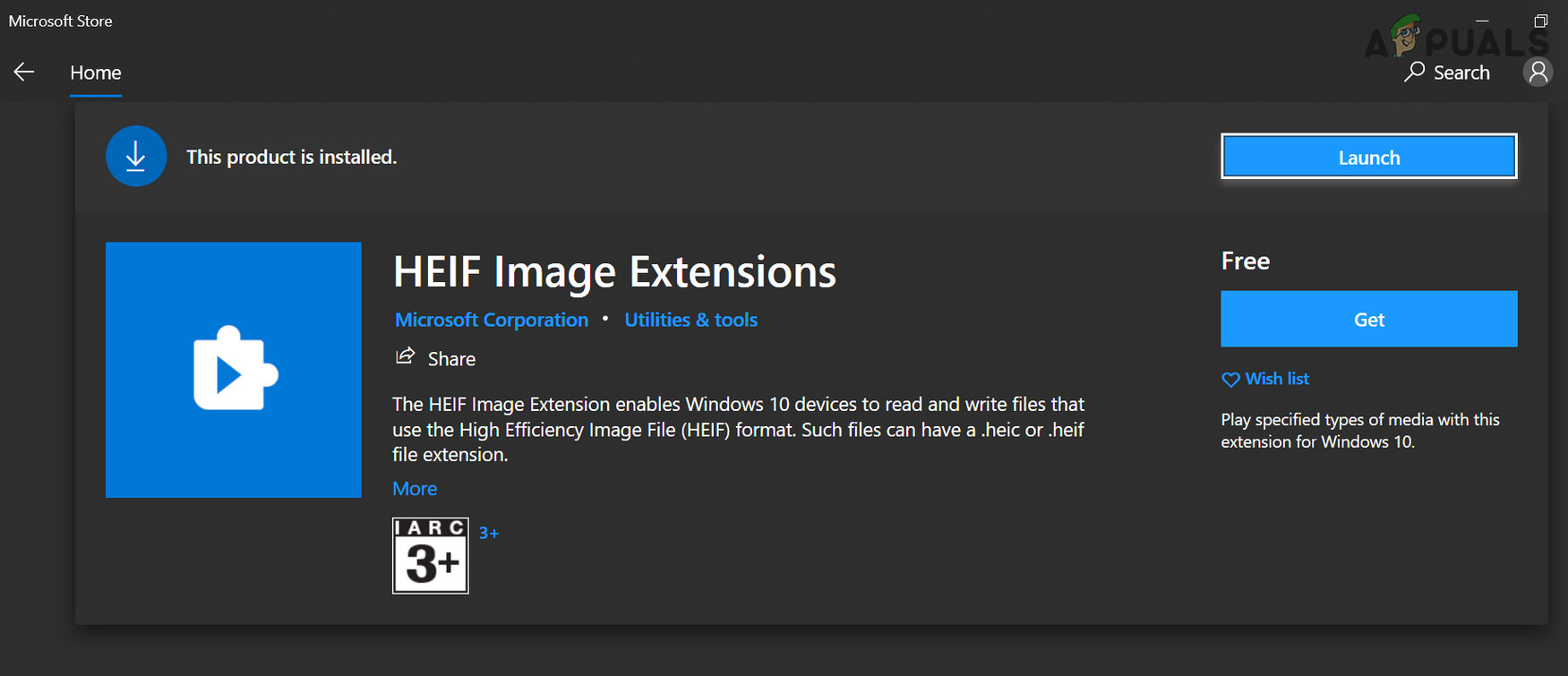
Get and Install the HEIF Image Extensions - Then reboot your system and upon reboot, check if you can open the HEIC files.
- If not, launch the Microsoft Photos application and click on 3 horizontal ellipses (near the top right of the screen).

Open Microsoft Photos Settings - Now, in the menu shown, select Settings, and under View HEIC files, select the option of Click Here to Install HEIF Media Extensions.
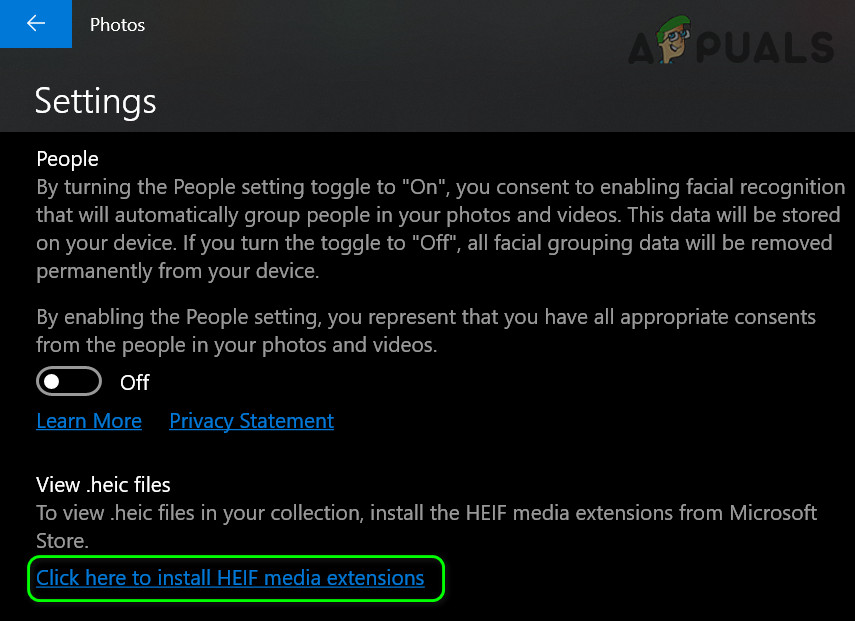
Install HEIF Extensions Through the Microsoft Photos Application - Then, in the Microsoft Store window, install the HEVC Video Extensions (you may have to buy the extension or you can redeem a Microsoft code on the HEVC Video Extensions from the Device Manufacturer page).
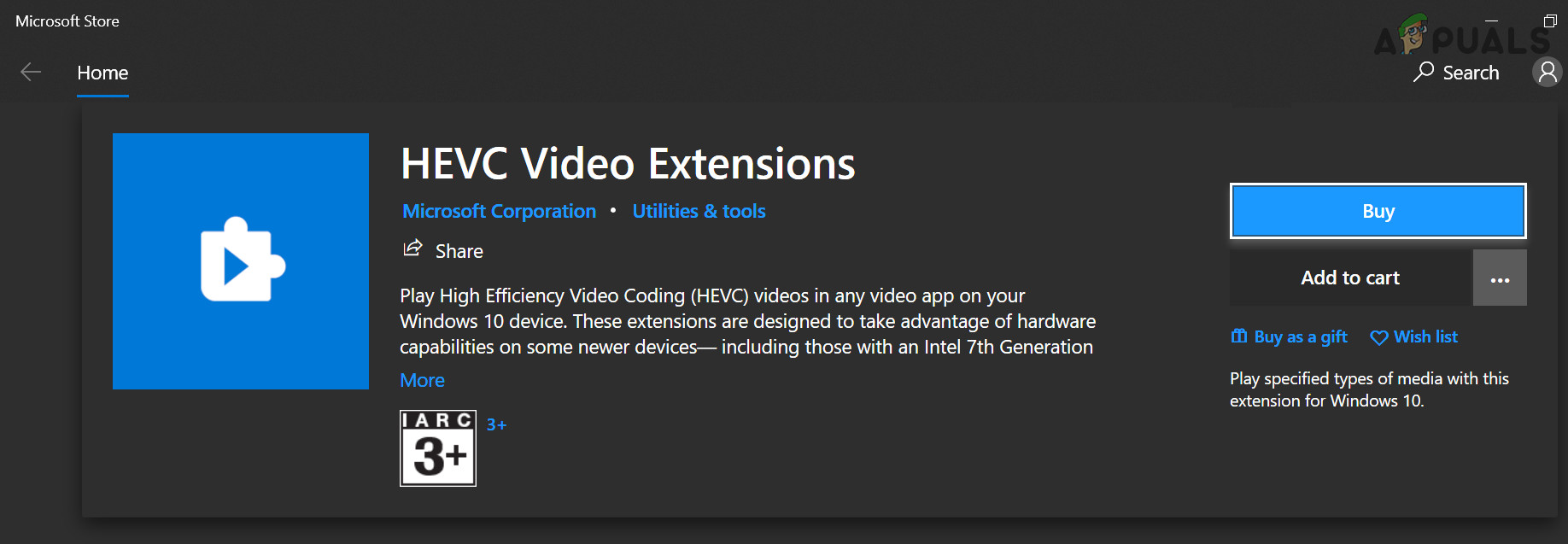
Install the HEVC Video Extensions - Now reboot your PC and upon reboot, check if you can successfully open the HEIC files.
Install HEIC Image Viewer – Converter Supported
Different photo editing applications can open HEIF files. One such application is the HEIC Image Viewer – Converter Supported available on the Microsoft Store.
- Launch a web browser and navigate to HEIC Image Viewer – Converter Supported Now, click on Get and then click on Open Microsoft Store.
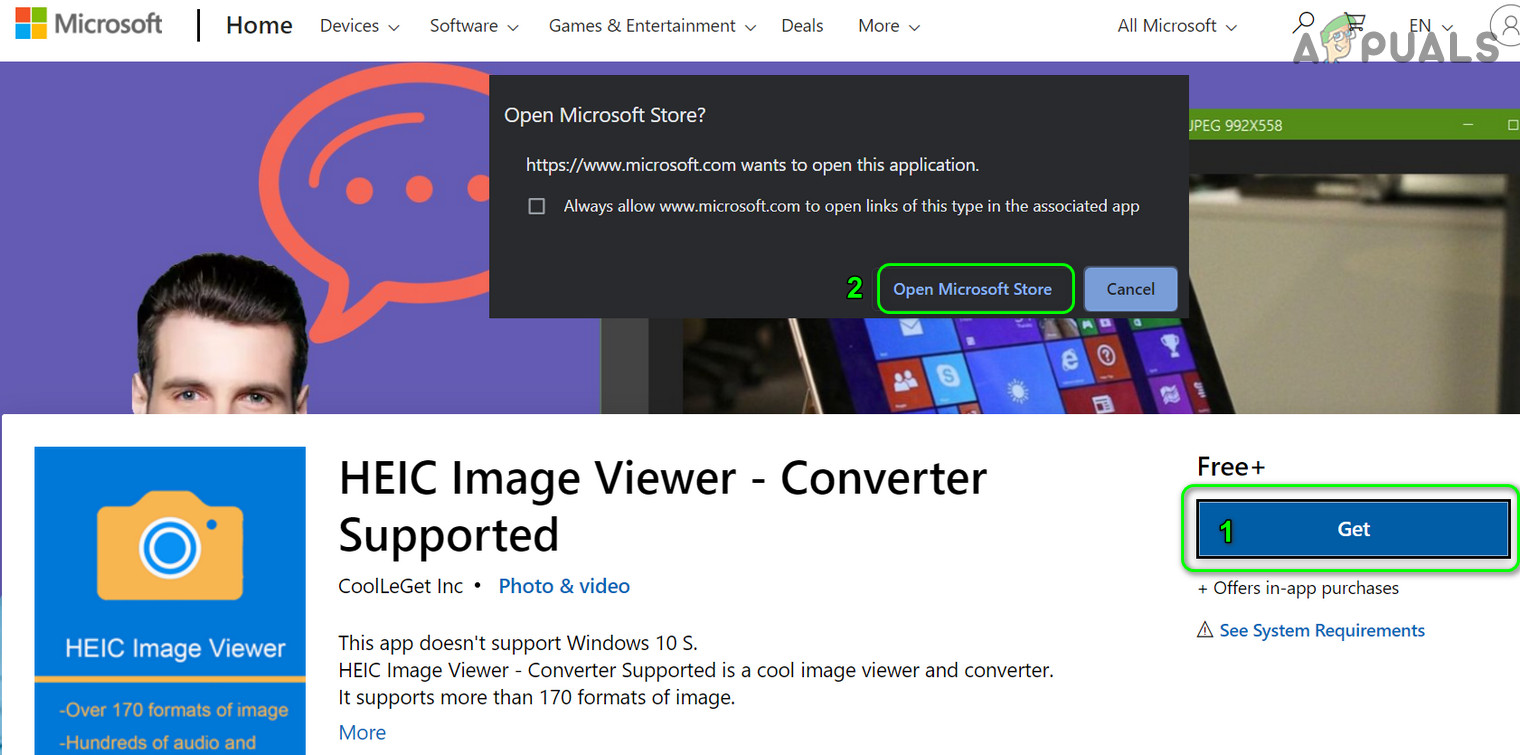
Open HEIC Image Viewer in the Microsoft Store - Then click on Get and install the HEIC Image Viewer.
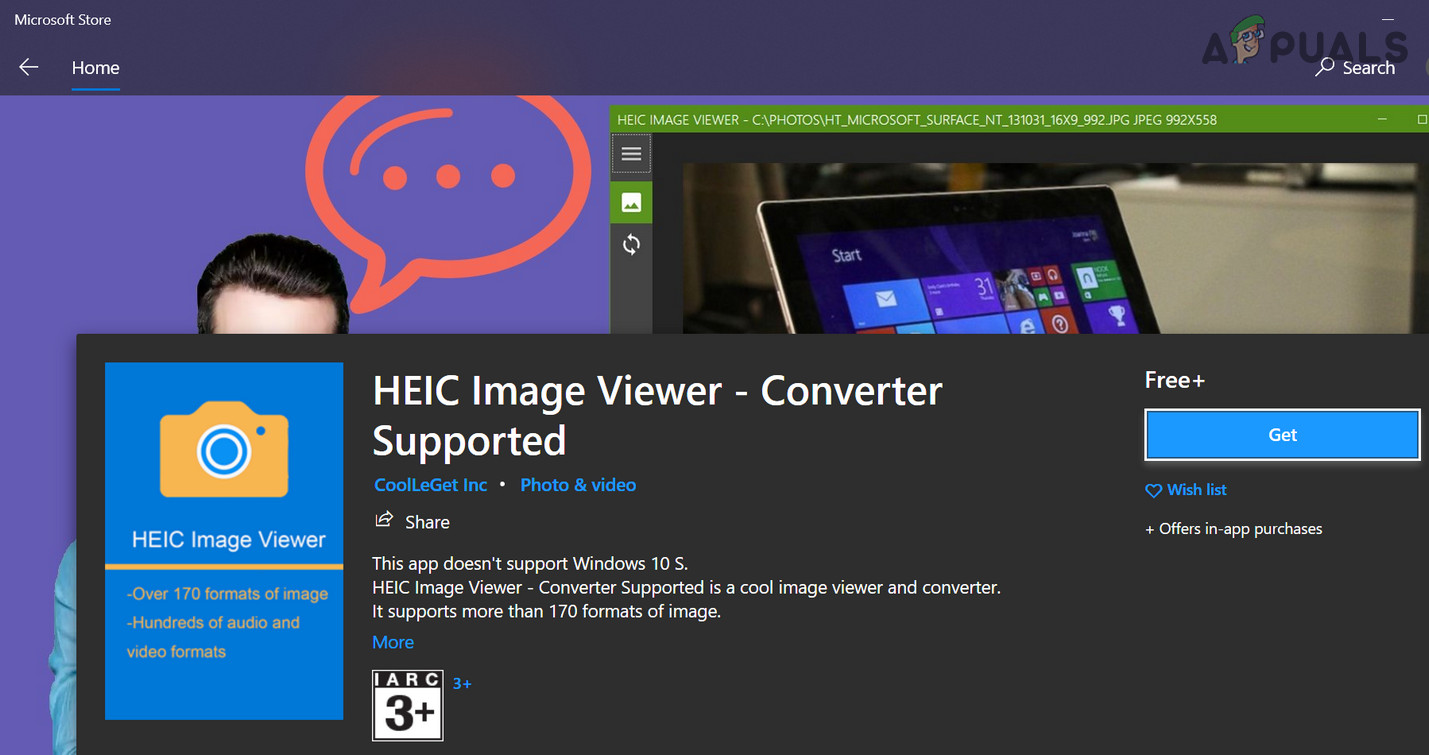
Get and Install HEIC Image Viewer - Now reboot your PC and then check if the HEIC files can be opened with HEIC Image Viewer.
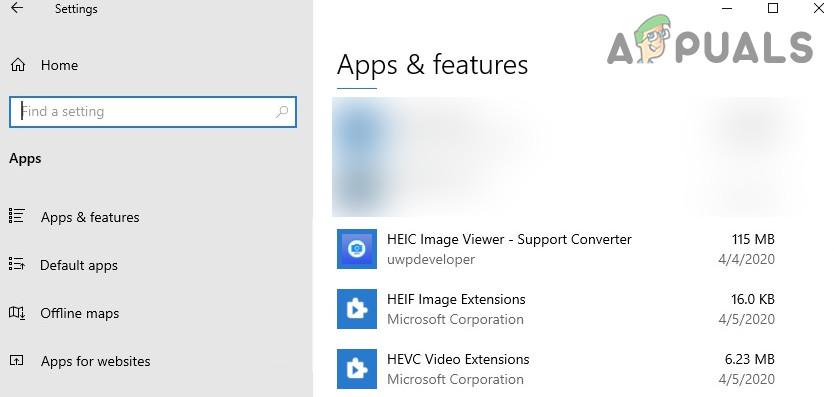
Use HEIC Image Viewer to View the HEIC Files
If the issue persists, you can also try iCloud, OneDrive, Dropbox, or Google Drive cloud services (on your iPhone) which will convert your iPhone pictures to JPEG before uploading on the cloud, and then you can access these files on your PC by using the PC client of the cloud service. If the issue is still there, then you can use any of the converting applications or browser extensions to convert HEIC files to Jpegs, Some of such applications are Format Factory, iMazing HEIC Converter, or ImageGlass (which natively supports HEIC without the Microsoft codecs extensions).
To avoid the cumbersomeness in the future, you can also set your iPhone camera settings to use Most Compatible (the images will be saved in Jpeg).





